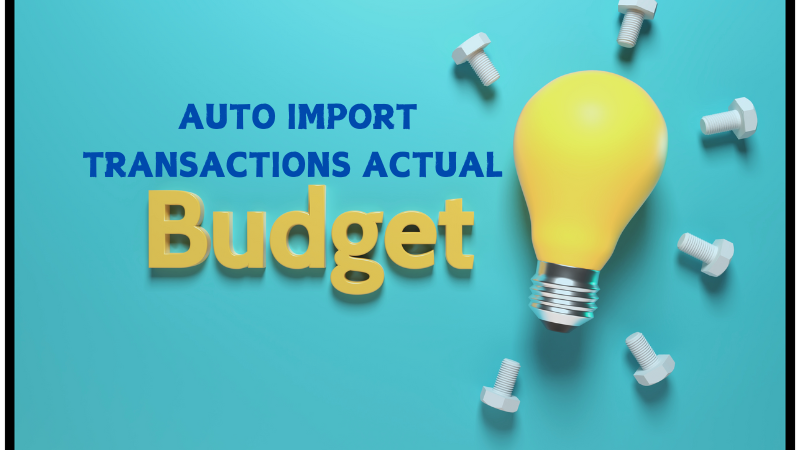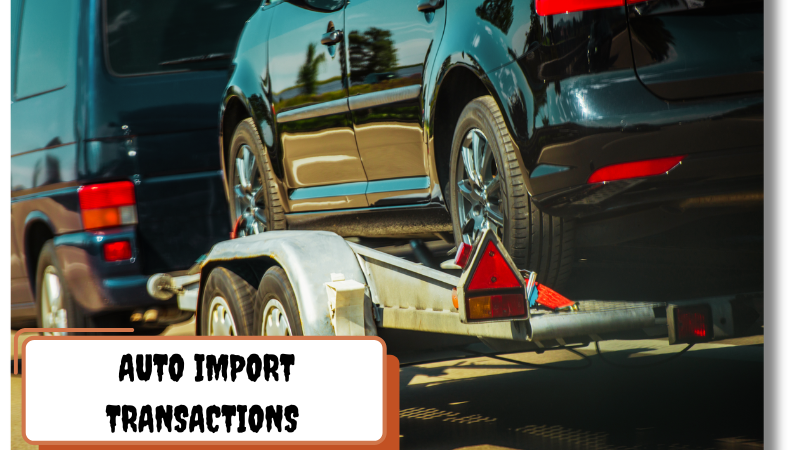Auto Import Transactions Actual Budgets: Streamlining Your Finances
Managing personal finances can sometimes feel like juggling multiple balls in the air. Many people feel lost in spreadsheets and waste hours tracking their spending. Here’s the good news: auto-import transactions can transform your budgeting. They can also bring you a wave of relief. Picture a world where your expenses update by themselves. You won’t have to track every penny anymore. It’s time to explore this powerful budgeting tool and how it can help you achieve financial clarity.
Let me take you on a journey through the concept of auto-import transactions and actual budgets. I’ll share insights into how automating your transactions can bring peace of mind, improve accuracy, and save you hours each week. And with the rise of 2025’s advanced budgeting tools, this is the perfect time to jump on board.
By the end of this article, you’ll know:
- What auto-import transactions are and how they can simplify your budgeting process.
- The best tools available in 2025 for auto-importing transactions into your actual budget.
- Why accurate actual budgets are essential for better financial health.
- Practical examples, tips, and strategies for effective use of these tools.
Ready to learn how to take your budgeting to the next level? Let’s dive in!

What Are Auto Import Transactions and Actual Budgets?
Auto-import transactions can simplify your finances. Let’s look at two main ideas: auto-import transactions and real budgets.
Auto Import Transactions
Auto-import transactions link your bank accounts, credit cards, and other financial accounts to your budgeting software. This feature automatically downloads your transactions. It updates your financial records in real-time. You don’t have to enter any data manually.
This not only saves time but also eliminates human error that often occurs when entering transactions manually. With auto-import, your spending shows up in your budget right away. So, you won’t forget a transaction or face surprises at the end of the month.
Actual Budgets
An actual budget is a real-time, accurate representation of your spending and income. An actual budget is different from a traditional budget. It shows your real financial situation based on past events. So, you don’t have to guess future expenses. For example, rather than guessing your grocery or entertainment costs, you can check what you’ve spent so far. This gives you a clearer view of your financial health.
A real budget takes away the guesswork. It helps you change your spending habits as you go. It’s not about predicting the future; it’s about reacting to the present with accuracy.
How Do Auto Import Transactions Help You Manage Actual Budgets?
Want to know a secret? Automating your transaction imports isn’t just a time saver—it’s a game-changer. Let me show you why.
- Accuracy Is Everything: Automated imports leave no room for human error. No more misremembering amounts or missing receipts.
- Real-Time Insights: With auto-import, your budget updates in real time. Imagine knowing exactly where your money stands without waiting for month-end reconciliations.
- Simplicity: You’re busy. We all are. Why waste time entering transactions manually when automation can handle it for you?
- Stay Within Your Budget: Accurate data shows your “actual” budget. It keeps you grounded. It’s what you’re really spending. You won’t overestimate or underestimate your financial situation.
How do auto import transactions help you manage actual budgets?
The integration of auto-import transactions with your actual budget takes the guesswork out of managing your finances. Here’s why it works so well:
1. Accuracy is Key
Automating your transaction imports keeps your budget accurate. This is its biggest advantage. Forget about manually inputting every expense. Auto-import captures every purchase, subscription, or payment in real-time. This reduces the risk of human error. No more forgetting to add that coffee purchase or missing a grocery bill!
2. Real-Time Insights
Wouldn’t it be nice to know how much you spend on groceries each month? You wouldn’t have to wait until the month is over. Your budgeting tool updates automatically with auto-import features. It shows the latest financial data. You can track your spending in real time. This helps you see trends and adjust your budget easily.
3. Simplicity and Time Savings
We’re all busy, and budgeting can feel like a tedious chore. Link your financial accounts to your budgeting app. This saves you hours each month since you won’t need to enter transactions by hand. This feature saves you a lot of time. You can then focus on other important parts of your finances, like savings and investment goals.
4. Staying Within Your Budget
With a real-time view of your spending, you can easily see if you’re sticking to your budget. If you’re nearing the end of your budgeted amount for a specific category (e.g., dining out), you can adjust your spending habits before you overspend. It’s like having a financial GPS that tells you when to slow down.

Step 1: Choose Your Budgeting Software
Not all tools offer auto-import, so your first step is finding one that fits the bill. Here are some of the best budgeting apps in 2024 that include auto-import features:
- YNAB (You Need A Budget): Known for its powerful budgeting rules and bank syncing.
- Mint: A long-standing favourite for its comprehensive financial overview and real-time sync.
- Quicken: Ideal for those who like detailed financial tracking across multiple accounts.
- EveryDollar: A Ramsey Solutions app for simple budget tracking. It has paid auto-import features.
Step 2: Link Your Financial Accounts
Once you’ve picked your tool, it’s time to link your accounts. Here’s how it generally works:
- Login to your budgeting app.
- Find the account linking option. It may be called “Bank Sync,” “Connect Account,” or something similar.
- Choose your bank from the list of supported institutions.
- Enter your bank credentials (don’t worry, these tools are secure!).
- Authorise the connection and voila—transactions will start flowing in.
Isn’t that amazing? You’re now one step closer to automating your budget!
Step 3: Set Categories for Transactions
A beauty of auto-importing is that most apps let you auto-assign categories based on past behaviour. For instance:
- Groceries: Your favourite supermarket’s transactions are auto-categorised.
- Entertainment: Netflix and Spotify subscriptions get neatly sorted.
But don’t worry—you can always tweak categories as needed to make sure your budget reflects reality.
Step 4: Monitor and Adjust Your Budget
Once everything’s set up, your work isn’t completely done. You’ll want to monitor your budget regularly to ensure everything is in line with your goals.
- Review your categories: Make sure transactions are categorised properly.
- Adjust budget allocations: If your spending patterns change, adjust your budget accordingly.
- Stay on top of trends. The more you know, the better you can predict future spending. This will help you save more.
The Best Tools for Auto Importing Transactions in 2025
Want to know what I’ve discovered? Not all tools are created equal. Some are easier to use. Some have better features. Others have extra bells and whistles.
Here are my personal recommendations for 2025:
- YNAB: I’ve personally used YNAB for years. Its “zero-based budgeting” system ensures every dollar has a job. The autoimport feature makes it easy to track transactions.
- Mint: Mint is a great tool if you want to keep track of all your finances in one place. It can auto-import data. It tracks bills, investments, and your credit score.
- Personal Capital is mainly an investment tracker. But, it has great budget features. It auto-imports your transactions seamlessly.
Common Challenges When Using Auto-Import Features (And How to Fix Them)
Let me be real for a second—not everything goes smoothly all the time. There are a few common challenges when using auto-import features, but don’t worry, I’ve got solutions.
1. Transactions Not Syncing?
Sometimes, banks may change their connection settings, causing sync issues.
Fix: Try reconnecting your account or manually refreshing the sync. If the problem persists, contact your app’s support team.
2. Duplicate Transactions
Occasionally, you might see duplicate transactions imported.
Fix: Most apps will let you merge or delete duplicates with a few clicks.
3. Mis-Miscategorized Spending
Auto-categorisation isn’t perfect—sometimes, your app may get things wrong.
Fix: Review your categories regularly and adjust as necessary. You can also set rules for specific transactions to prevent future errors.
Isn’t it cool how these tools keep evolving to solve such issues?
Real-World Example: How Auto-Import Helped Me Stick to My Budget
Here’s what happened to me: A few years ago, I struggled to stay on top of my spending. I’d forget to enter transactions. Or, I’d categorise them wrong and overspend.
Once I started using YNAB’s autoimport feature, things changed dramatically. Suddenly, every expense was accounted for. I could see where I was going over budget and cutting back in real time. It was a game-changer for my finances. Now, I save more than ever before because I always know where my money is going.
FAQs About Auto Import Transactions and Actual Budgets
Yes! Most budgeting apps use bank-level security, so your data is encrypted and protected.
Many apps allow manual imports using CSV files, which is a bit more work but still gets the job done.
Absolutely! Many tools let you sync multiple accounts, so you can keep track of all your finances in one place.
Some apps, like Mint, offer free auto-import, while others (like YNAB) include it in a paid plan.
This depends on the app, but most tools update daily or even multiple times a day.
Conclusion: Automate Your Way to Financial Freedom
Auto-import transactions are a game-changer when it comes to managing actual budgets. Automating your expenses and categorizing them in real-time saves time. It also reduces human error and gives you a clearer picture of your finances.
In our fast-paced world, technology keeps changing. So, it’s smart to use these tools to improve your finances. Auto-import transactions can help you stick to a budget, build savings, or track your spending.
So, what are you waiting for? Try one of the budgeting tools I’ve mentioned and take control of your financial future today!






